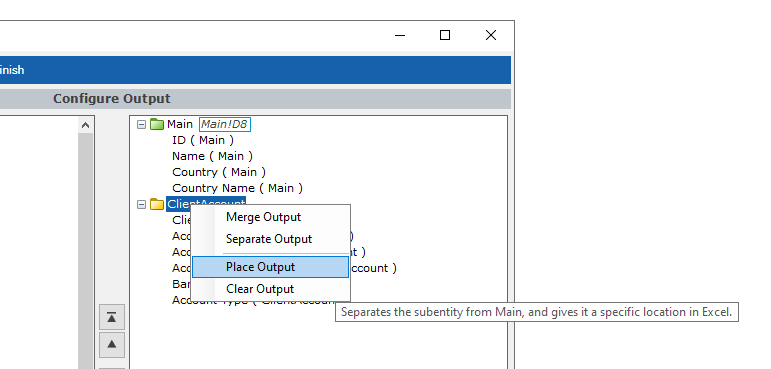Static Data Editors
The Static Data Editor Data Source is used to fetch information from the Wallstreet Suite Editors. This source is useful for querying out business configuration from the system such as Instruments, Clients across all modules of TRM, ACM & CLM.
To create a new Static Data Query in the Query Configuration Wizard, follow these steps:
Step 1: Select Query Type
Select the Static Data query type from the list of data sources and optionally specify a name and output destination in the the top half of the Options page.
When querying data from the Static Data source then you must also specify the Editor and a Mode.
- The Editor corresponds to the entity that you want to fetch data from, for example the Client Entity (and Editor). Generally each Entity has its own application in Wallstreet Suite that can be accessed from the Application Manager.
- The Mode determines which State of the entity that you see, similar the SDM Edit or SDM Read-only options in a Static Data Editor in Wallstreet Suite.
- Read-Only Mode returns data in its Final state and does not return any unapproved changes
- Edit Mode returns data in its current state, which can sometimes be with unapproved (non-Final) changes
- Admin Mode returns similar data as Edit mode, but can sometimes also return entities that are in Deleted state
Mode SelectionFor reporting purposes then it's always advised to use the Read-Only Mode to ensure you are using the most current approved version of your Wallstreet Suite Data.
Step 2: Define Query Criteria
The second step of the process is to define the Query Criteria or parameters for your query. The criteria will narrow down your query results and only fetch the ones that match the criteria.
To define a a Query Criteria begin by selecting one or multiple columns that you want to filter on by toggling the checkbox next to them. Selecting multiple columns will create an AND statement. To remove a column you can press the X next to the header.

Query that fetches Clients with a name starting with C and that have the Counterparty Role
After the columns are added you can define values of the criteria by using the dropdown menu, typing them in manually or linking the criteria to a Parameter or Excel Reference.
More information about Parameterization can be found here: Parameterization
Any column values that are blank will be ignored.
Tip!You can use the same wildcards in OmniFi as in Wallstreet Suite, such as SKY% to fetch any Client that begins with the prefix "SKY"
Step 3: Select Output Columns
The third step brings up the Configure Output window, which allows you to choose what fields to include in the query result.
The left-hand side contains a list of available fields while the right-hand side contains a list of selected fields. In both sides, fields are grouped according to the main entity and subentity, which can be collapsed and expanded.
Sample where Client & Account information is retrieved
Selecting and deselecting fields
There are several ways to select and deselect fields:
- Double-clicking on the field
- Dragging and dropping
- Using the left & right arrows icons in the middle between the two grids
- Using Keyboard Shortcuts Queries
The added fields may be sorted by using the up & down arrow icons in the middle between the two grids or by dragging and dropping them in place.
Configuring output destination
After selecting fields to include you can optionally define an output destination if you want the data presented in Excel directly from the Query. Each individual dataset (main entity or subentity) can have its own output destination defined.
Additional information and tips around the output of data can be found in the Transactions section Configuring Output Destinations

Output can be seen on the right-hand side, and by right-clicking it is possible to change it
Step 4: Finalizing the Query
Choose Save to save the query without running it, or Save & Run to save and execute the query. If query output is defined then you will see your output in Excel.
Updated 8 months ago